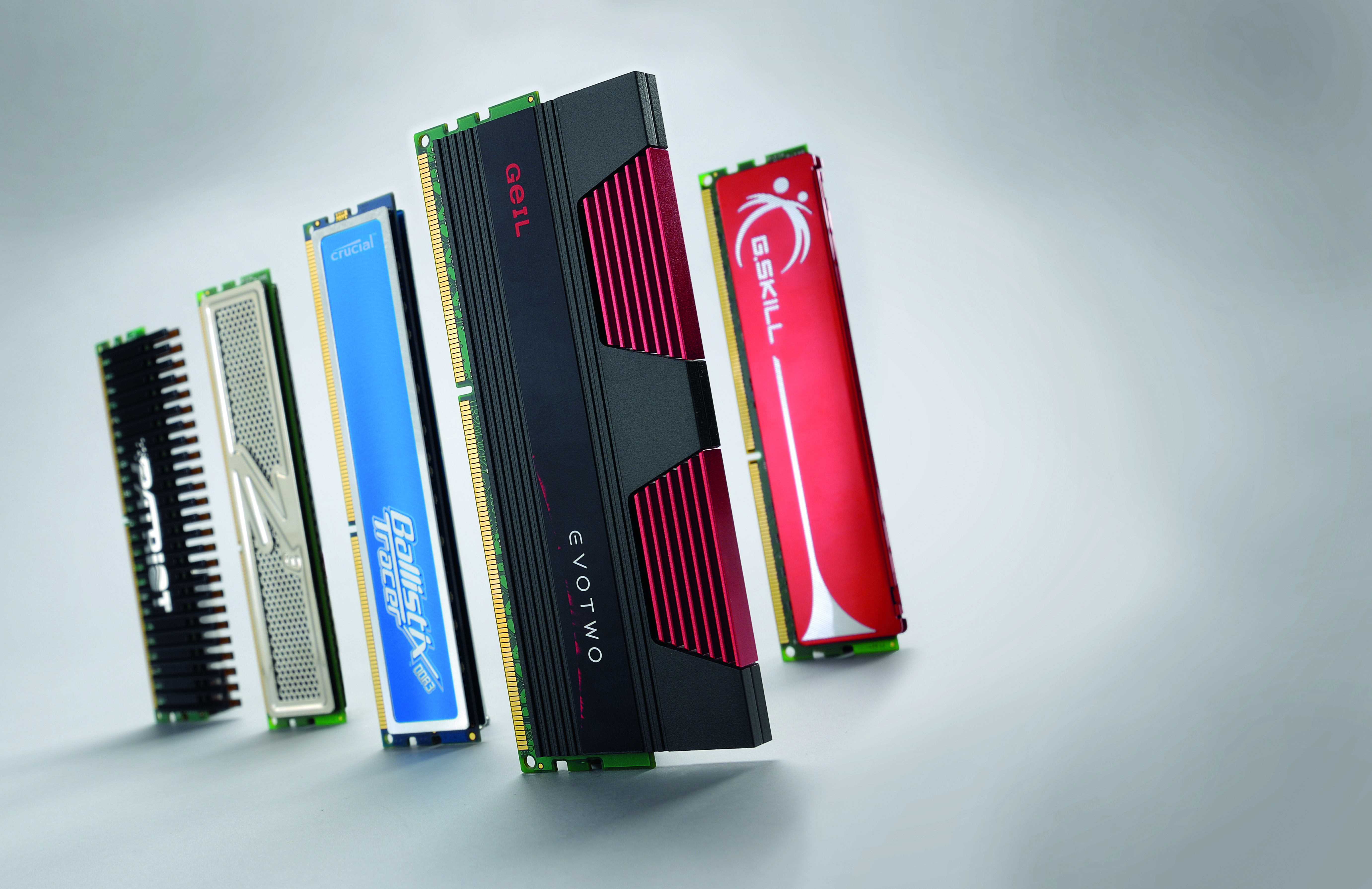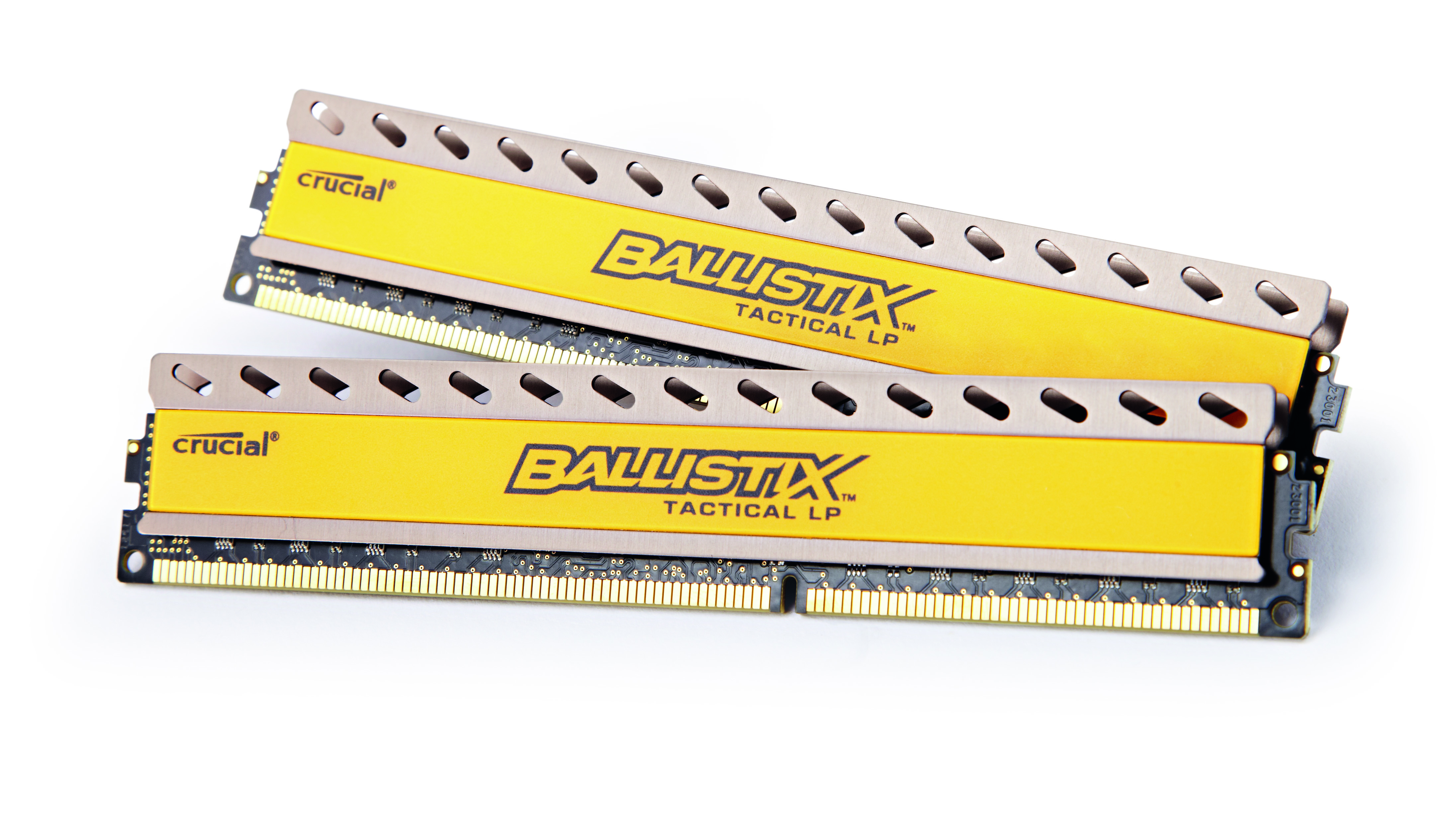The easy PC upgrade guide: everything you need to know

Memory
How much difference does memory make for gaming? Well, capacity is king and once you get up to a certain amount everything else is just frosting. The inherent hardware stagnation in the last generation of consoles (360 and PS3) meant devs learned to do an awful lot with the meager memory at their disposal. That translated through to their work on the PC.
The memory industry hasn’t found itself progressing much, either. The current DDR3 standard was introduced way back in 2007, and not a lot has changed in the meantime. Only at the end of 2014 have we started to see DDR4 making its way to desktops in the seriously high-end X99 platform, and only then because of its server heritage.
Even though we’ve seen triple- and quad-channel memory configurations arrive in high-end platforms, our mainstream machines have been happily running on dual-channel RAM without a performance problem. For the vast majority of PC games we can be very comfortable with a 4GB DDR3 memory quota, ideally split between at least two individual sticks to take advantage of the extra bandwidth of dual-channel mode. And, because DDR3 starts out at 1,333MHz, speed really isn’t a problem—quicker memory isn’t necessarily going to garner any extra FPS in-game.
How much RAM you actually need
We’d say 4GB is the bare minimum for a gaming PC these days, so if your current rig is a little shy of that we’d recommend buying another 4GB.
If you’ve already got 4GB of DDR3 in your rig then it’s probably happy days for you. Memory upgrades are the simplest and usually cheapest of the upgrades you can perform on your gaming rig. With 8GB resting in your rig you’re going to be sitting pretty in terms of system memory for a long while yet.
Most current games are looking at 4GB as the minimum system requirement, but we are seeing games like Call of Duty: Advanced Lt. Worf and Dead Rising 3 turn up with 6GB as their minimums.
There’s also the fact that at 4GB you might be getting a little stretched in today’s seamless, open-world playing areas. We hate loading screens, so games tend to jam as much as they can into RAM so they don’t have to keep going back to the hard drive every few seconds. If you don’t have much excess memory then you could be maxing it out, leading to the dreaded open-world chug. If you’re noticing intermittent frame rate problems in open-world games then it could be your memory needs some attention.
The biggest gaming news, reviews and hardware deals
Keep up to date with the most important stories and the best deals, as picked by the PC Gamer team.
With the rise of the Let’s Play, and the ease of streaming your gaming experience to friends and/or the world, you might also want to start recording and playing back the most exultant and exciting bits of your gaming sessions. And to be able to keep doing multiple things with your machine, without dropping valuable frame rates, that’s also going to need some extra memory.

Identifying a RAM bottleneck
The easiest way is to check out what your system is doing in-game. Start by right-clicking on your taskbar and opening up Task Manager. On Windows 8.1 (yes, I know, ‘boo hiss’) the improved ‘Performance’ tab makes an excellent system monitor, but Windows 7’s Task Manager is useful too.
If you’re rocking a dual-monitor setup have it open up on your secondary screen, but if not don’t worry, just leave it running in the background while you boot your favourite, or most demanding, game. Get into the game proper and start playing as you normally would.
If you’re testing to see if you need a boost for simultaneous streaming, then you’ll also need to start your streaming/recording software too.
Now either look over at your secondary screen (you lucky dualie) or Alt+Tab back into Windows and check out the amount of memory in use and how much is currently free. If there isn’t any and your RAM is getting towards 100% usage, then you know you’re RAM-bottlenecking.
To be honest, you’ll probably spot this before you even get to see what Task Manager says as the very act of Alt+Tab’ing could well bring your system to a grinding, disk-accessing halt. Your OS will be fighting the game for system resources.
The intricacies of upgrading RAM
You may actually be sitting on extra memory speed without even knowing it, and I’m not talking about complicated overclocking. Intel motherboards (and some AMD) will have support for Extreme Memory Profiles (XMP) which allow you to flick a software switch in your BIOS to get the full rated speed out of your RAM.
If you don’t do anything when installing memory, the motherboard will default to its standard speed—for DDR3 that’s 1,333MHz. In the BIOS you can select the XMP for your specific installed memory and get a speed bump.
To get into your BIOS hit F2 or Del when you first start your rig, before the Windows loading screen. They differ between motherboards, but find the memory settings and you will also find the option to select a memory profile. Save and exit and your rig should boot without trouble. Load up CPU-Z, hit the ‘Memory’ tab and check the speed. Just don’t be too disappointed if you don’t notice any obvious performance boost.
You may find the specific XMP you’ve selected does some sneaky CPU overclocking to get to its new frequency. If your system gets unstable afterwards, simply boot back into the BIOS and set your memory back to default.
If you've identified that you have a RAM bottleneck, you can use the super-useful CPU-Z app to check on your current memory setup. Click on the Memory tab at the top and you’ll see what type of RAM you already have, its capacity, and how many channels it’s running. You’ll also see its speed below, but remember because it’s double data rate (DDR y’see) memory you’ll need to double the displayed frequency in your head to figure out what speed your system is actually running at.
If you see a big blue ‘DDR2’ in the ‘Type’ box then I’m afraid I’ve got some bad news for you. There’s probably a big system upgrade in the wings. Your aging rig will be hoping to retire soon and is probably already looking for a nice place down in Florida (don’t spoil its dreams with talk of humidity, please).
In a system old enough to be running DDR2, I’d argue that memory isn’t going to be your bottleneck right now—your CPU is likely to be holding things back, no matter how good your graphics card is. My advice would be to think of a full system upgrade or one of those CPU, motherboard and memory bundles I mentioned earlier.
With DDR3 RAM, speed likely isn't an issue. You just need more.
Note: If CPU-Z said you’re currently running a dual-channel setup then you will need to spread a subsequent RAM upgrade across two spare motherboard memory (DIMM) slots to keep the welcome extra bandwidth performance of dual-channel mode.
In that situation you’ll need to pick up a 4GB upgrade kit split across two modules - just check there are a couple of spare DIMM slots in your motherboard ready to receive your new memory. And the best way to do that? Pull the side panel off your rig and nose around inside.
What about memory frequency? You can, after all, hit crazy-high speeds these days, up to 3GHz and beyond. Does that matter for gaming? For my money, no. If you’re a professional video-editor, 3D renderer or heavy Photoshopper then speedy memory can help out. In gamed? Not so much. Dual-channel DDR3 running at 1,333MHz will deliver all the bandwidth you really need for PC gaming.
On the next page: How to easily upgrade from one HDD/SSD to a newer, faster one.
Page 1: Introduction
Page 2: Graphics card
Page 3: CPU and motherboard
Page 4: Memory
Page 5: Storage
Page 6: Cooling

Dave has been gaming since the days of Zaxxon and Lady Bug on the Colecovision, and code books for the Commodore Vic 20 (Death Race 2000!). He built his first gaming PC at the tender age of 16, and finally finished bug-fixing the Cyrix-based system around a year later. When he dropped it out of the window. He first started writing for Official PlayStation Magazine and Xbox World many decades ago, then moved onto PC Format full-time, then PC Gamer, TechRadar, and T3 among others. Now he's back, writing about the nightmarish graphics card market, CPUs with more cores than sense, gaming laptops hotter than the sun, and SSDs more capacious than a Cybertruck.

